Rand Airport Air Scouts Visit 19.02.2022
By Russell Dixon-Paver
Google Banner Ad
Contact was made with Warren Lovell, shortly to be the Troop Scouter at 4th Benoni Air Scouts, in late 2021 at a Steady Climb Fly-In event at Rhino Park. They were impressed by the coverage Pilot's Post gave them in the article on that event and invited us to cover their visit to some businesses at Rand Airport, to show the youngsters that aviation was much more than only being a pilot. The 4th Benoni Air Scouts were joined on this visit by Springs Central Air Scouts along with the Cubs, Scouts, Rovers and their supporting parents (known as "Officials"!) there were around 85 "bodies" on the visit.
Predicted and actual weather on the day meant that the SAPFA Rally, postponed from 2022-01-29, sadly had to be cancelled, yet again. As the Scouts were not flying, they applied their motto: "Be prepared" and still turned out, equipped with the necessary clothing to undertake the visit, despite the cold and rain.
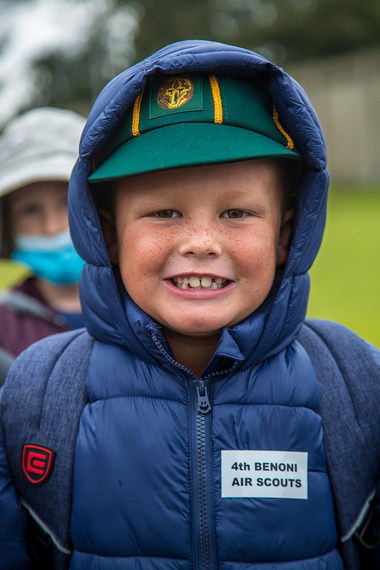 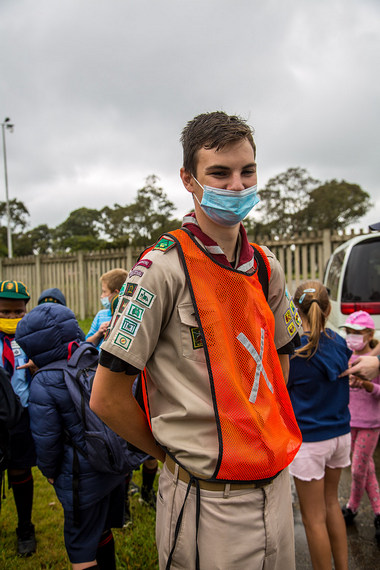
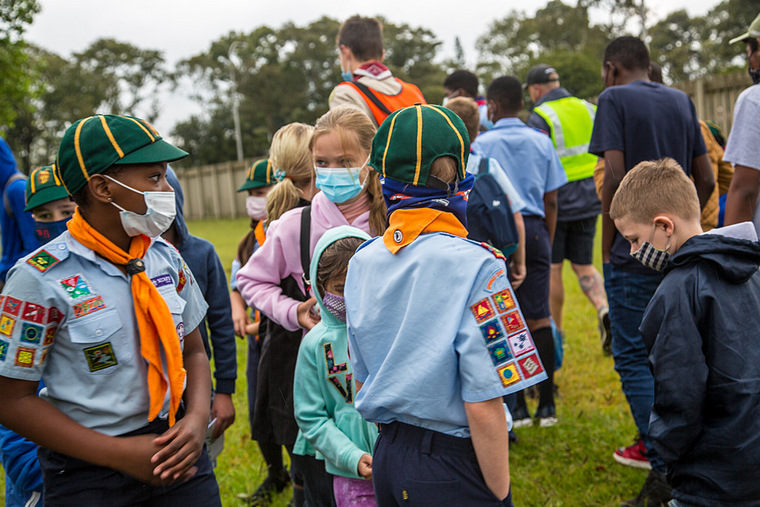
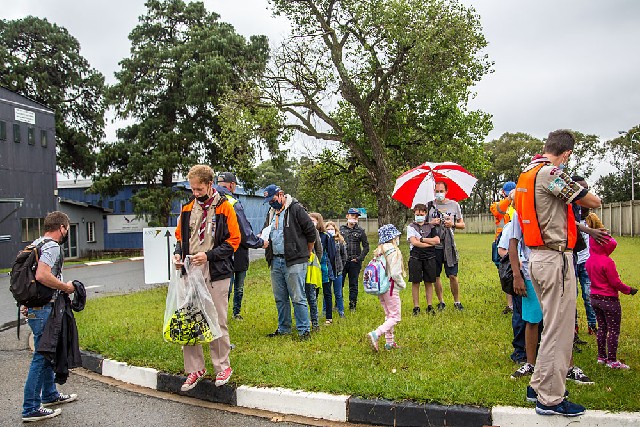
Cubs, Scouts and Rovers forming up and getting organized for the day's visits as the rain starts falling. Officials and Rovers get hi-viz vests to "be prepared".
An extract from Scouts South Africa published documentation explains some concepts relating to the movement:
SCOUTS South Africa is made up of three branches:
· Cubs: boys and girls 7 to 10 years old
· Scouts: boys and girls 11 to 17 years old
· Rovers: young men and women from 18 to 30 years old
·
The Scouting activities are co-ordinated and facilitated by thousands of dedicated volunteer Adult Leaders nationwide.
Structure:
Groups Scouting is run in local groups, which may be made up of units of each branch, for example, a Cub Pack, a Scout Troop and a Rover Crew. Groups are run by volunteer adult leaders and parents. The volunteer leaders, known as Scouters, run a programme of weekly meetings, camps and other activities.
Districts Scout Groups form local districts which are coordinated by a volunteer District Commissioner and assistants.
There are also Regional and National structures.
Aim:
The Aim of SCOUTS South Africa is to contribute to the development of boys, girls and young adults in achieving their full potentials as individuals, as responsible citizens and as members of their local, national and international communities by:
· Developing their character;
· Training them in citizenship;
· Developing their spiritual, social, intellectual and physical qualities
·
In typical Scouting fashion, this event was well organized, with a map showing the starting area, the planned process and hangars to be visited as well as a schedule showing how and when the group was planned to move. Safety instructions were given, including designated emergency assembly areas and instructions how to move about, with special emphasis on the "airside" movements. Senior Scouts and "Officials" were equipped with hi-viz vests and moved with the group.

Warren Lovell outlines the plan for the day and covers the safety briefing.
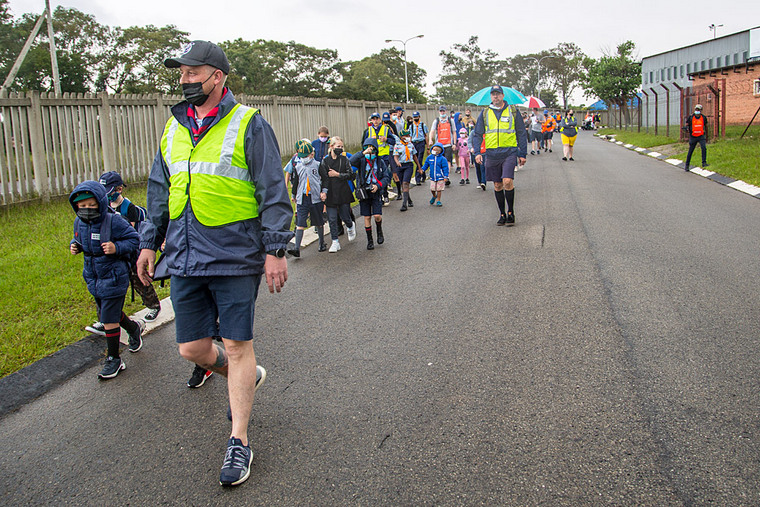
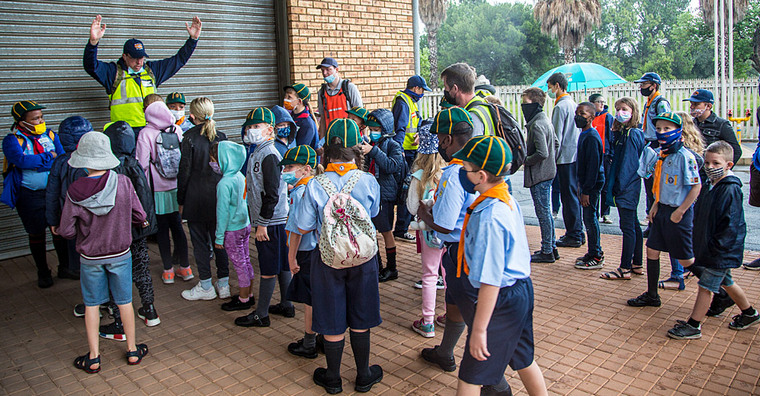
The group moved promptly at the scheduled starting time down to the Pilatus Centre and Gareth Langton, Scouter from Springs Central Scouts, had everyone formed up outside.
At the Pilatus Centre, they were met by Gerry Wyss and moved into the hangar occupied by a Cessna Grand Caravan and a number of Pilatus PC-12 aircraft. The group were addressed by Gerry about their business and some details about the PC-12 and new PC-24 Pilatus products. He introduced Kyle Lumsden, a licensed airframe and engine engineer and he gave a brief background of the engineering aspects of maintaining the aircraft. Kyle then powered up the electrics on a PC-12 and the Cubs, Scouts, Rovers and Officials were able get inside the aircraft, two at a time, where Kyle and Warren were on hand to provide details and answer questions.

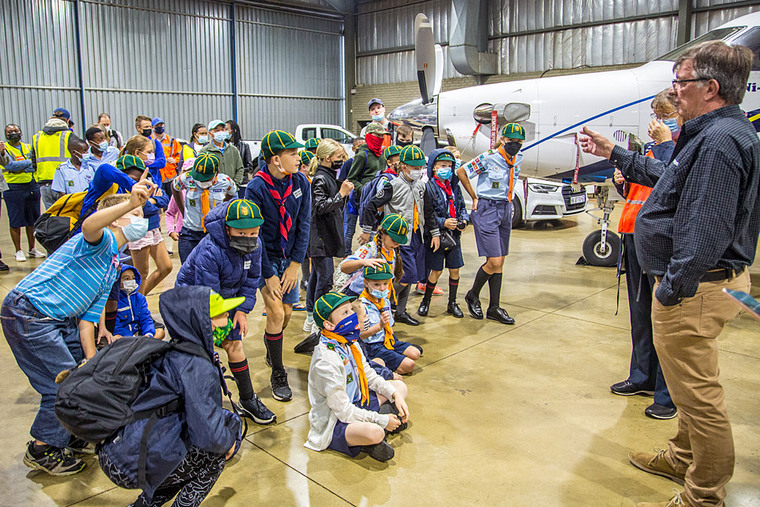

Gerry and Kyle speak to the assembled group and answer questions.
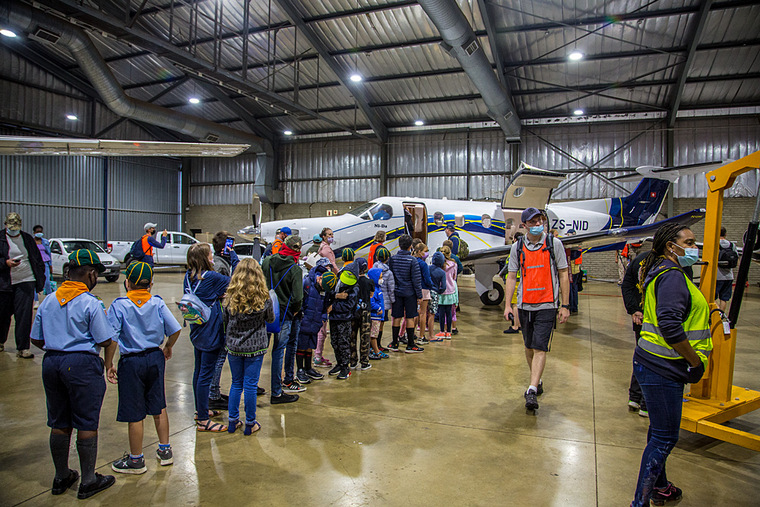
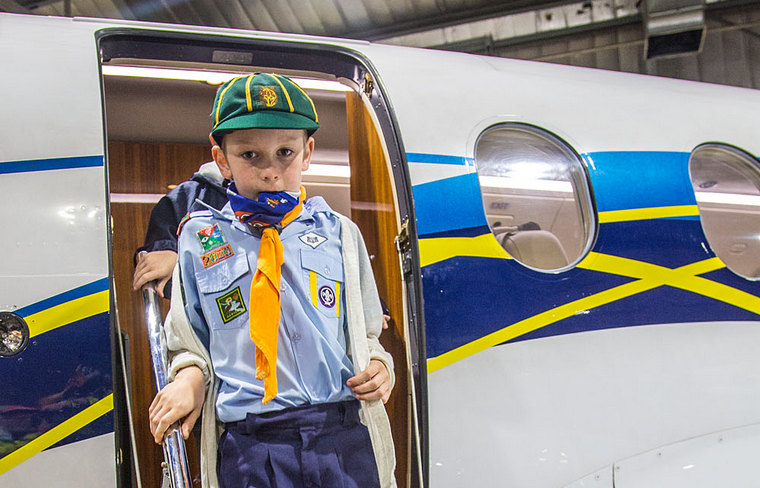
A line is formed for turns to board the PC-12 and see the live cockpit.

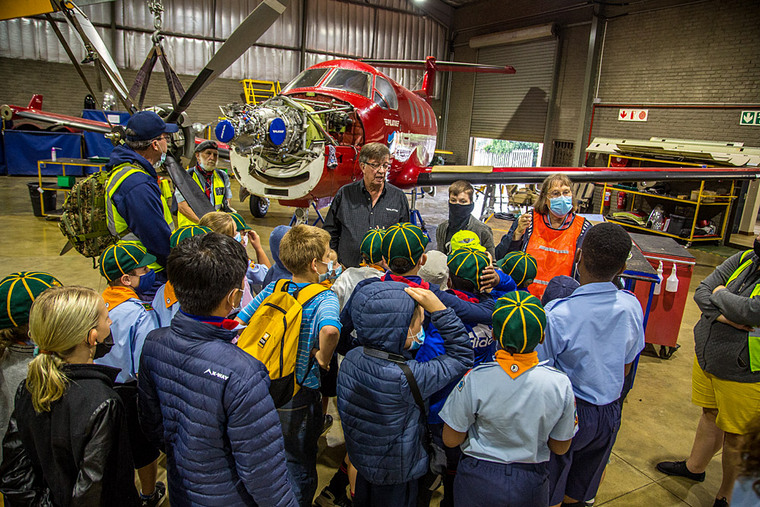
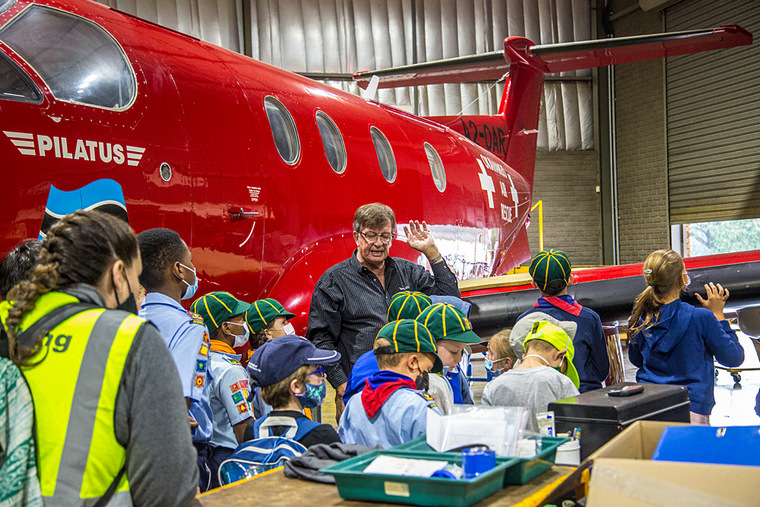
While Gerry, himself an ex SAAF pilot and instructor, described the main parts of the PC-12 so the Cubs could prepare for testing for their aircraft badge.
Gerry related that their technical support was an integral part of their client relationship and what spares they did not have in their extensive stock, could be sourced, mostly by the next day, from the Pilatus factory in Switzerland. Where necessary, spares and engineers could be dispatched to an aircraft requiring attention in a remote location.
Once the Cubs had been inside the PC-12, Gerry helped them by describing and explaining the basic aircraft parts and operation, referring to a bright red PC-12 air ambulance, which was in for its regular service. This would form the basis for a later test, so that the Cubs could earn their Aircraft badge.
When the activities were completed, the group had a group photograph taken in front of the PC-12 and Gerry generously provided everyone with a Pilatus cap, a PC-12 poster and a cold drink as we left for the next stop, right on schedule.

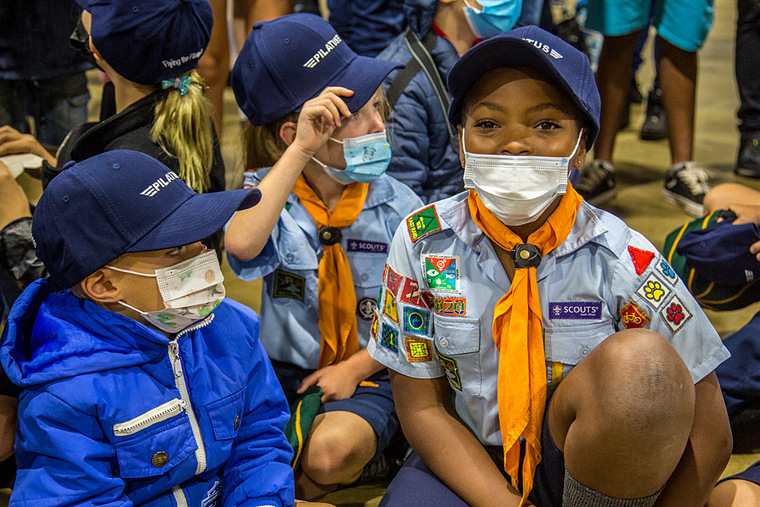
Group giving the "Pilatus Salute" and their new Pilatus caps were donned and admired.
The second stop was Alto Aero Engineering, which celebrates their 50th anniversary this month. Eugene Voges, who has been in the business for around 30 years himself, took over from his father, Boet, now semi-retired while a number of other family members are also active in the business. Eugene gave an overview of Alton's activities and the group then moved through the piston engine maintenance workshop. Alton provides maintenance services to around 250 aircraft and are fully capable in all disciplines of maintenance and repairs on light aircraft. They run a certified Lycoming piston engine workshop, using only original spares. A highlight was Eugene showing the group the Piper Meridian, a turbine equipped aircraft that they also maintain. The Cubs and Scouts asked many insightful questions and received comprehensive answers, within the time available.
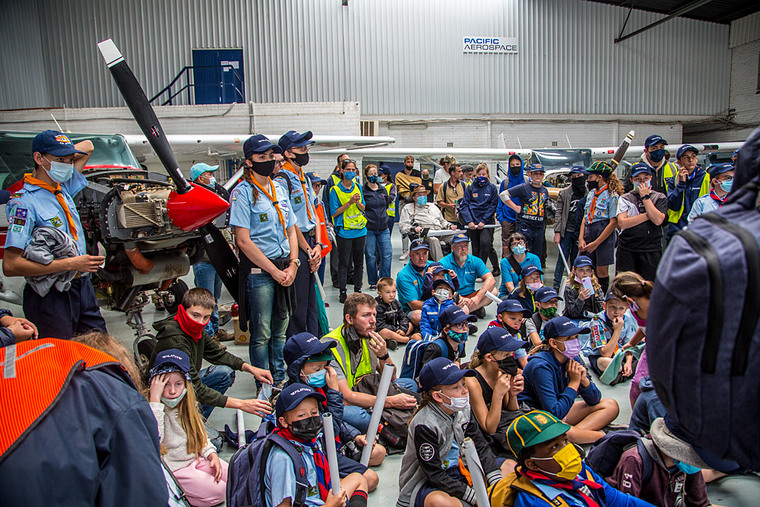
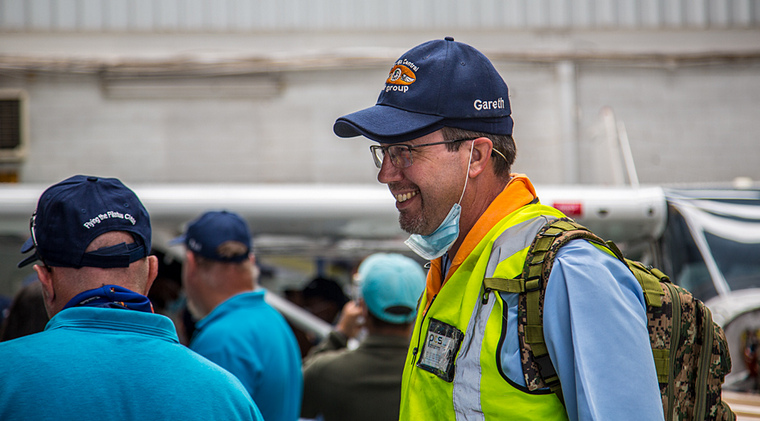
The group listen intently to Eugene Voges outlining the overall aspects of Alton Aero Engineering, while Gareth Langton looks on.
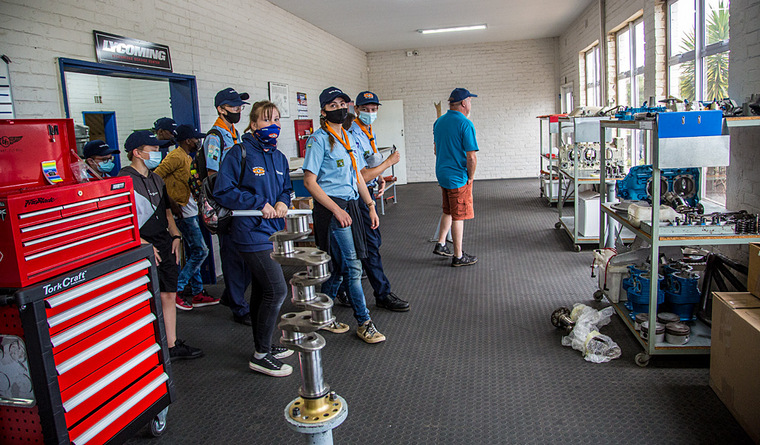

Everyone moved into the Lycoming approved piston engine workshop and Eugene gave engine specific servicing and repair details and answers questions.
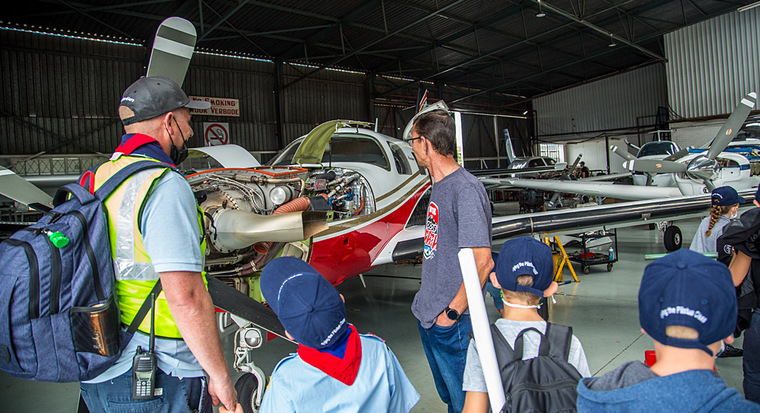
Eugene shows the turbo-prop powerplant of the Piper Meridian, which is clearly one of his favourite aircraft.
The next stop was at Henley Air's hangar to have an overview of the Rocket HEMS services. This necessitated moving on the airside, so senior Scouts and Officials ensured the Cubs and younger Scouts moved in an orderly and safe manner in the designated area.
While they were moving, a Robinson R22 Beta was doing some training sorties, so a brief pause was made to see some flying.
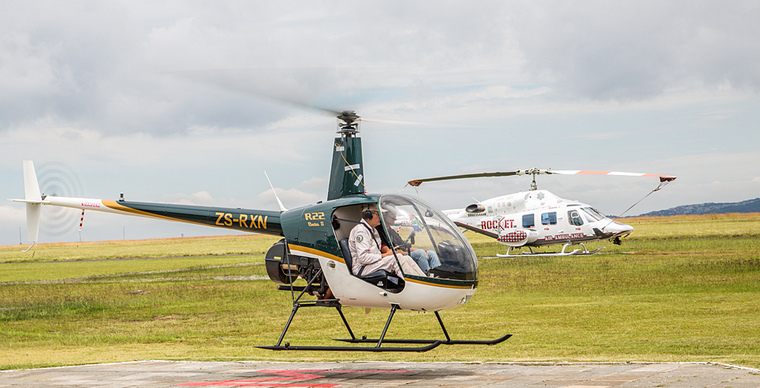
Robinson R22 Beta takes off with the Bell 222 on the helipad in the background - basic trainer to sophisticated life-saver.
The group was organised in the hangar, surrounded by about 17 different helicopters of various types. Rory, Deon and Corne explained the various aspects of their operation, including the typical experience and legal requirements for aero medics and pilots for operations during daytime and nighttime. A twin-engine helicopter was required and two pilots were required for night operations to add extra margins of safety, especially because they need to land and take-off from unprepared areas in emergency situations. Deon pointed out that the scouting skills of navigation and knots were especially applicable to their operations. He had been doing hoisting training and especially in that application, skills in using correct knots were essential life skills. Corne explained the process of planning and dispatching HEMS units as calls for their services come in. Rory also described the pilot requirements and training and that they had a full Bell 222 simulator for training and keeping pilot's currency up to date.
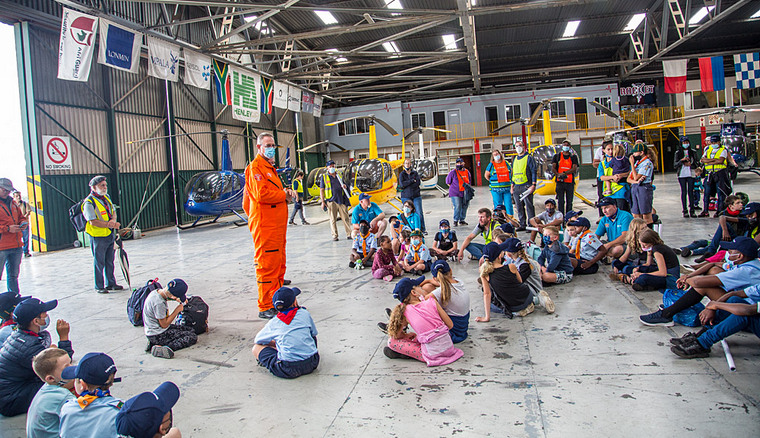
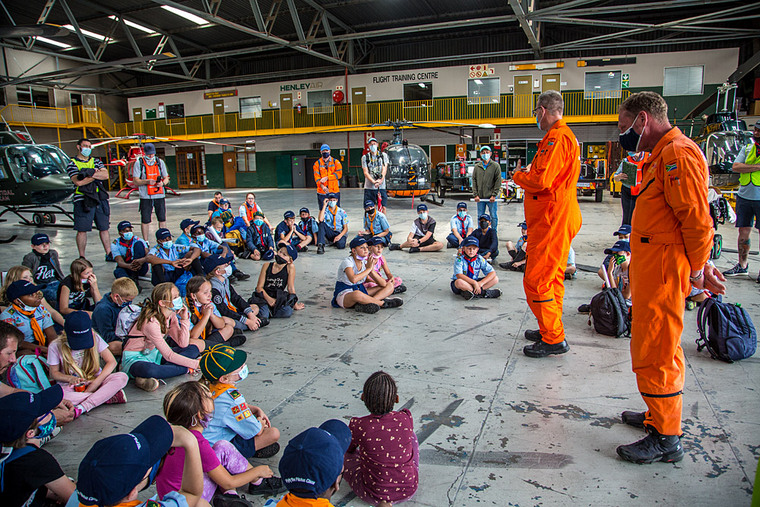
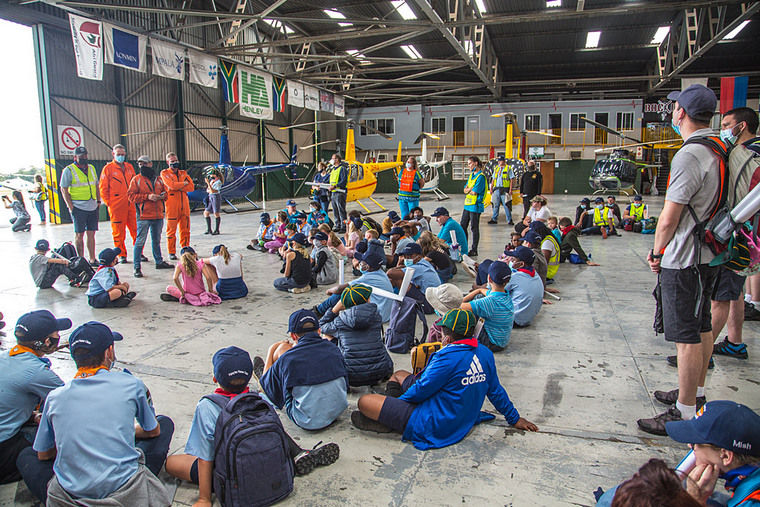
Rory, Deon and Corne explain aspects of their operation and answer difficult questions.
They have a non-operational Bell 222 airframe in the hangar, which is a medically equipped simulator and used for Aero Medic training and drills. The Cubs were shown the inside of this "flying ICU" by Rory, while Deon took successive groups of scouts out to the Bell 222 on standby on the helipad, to show them the cockpit and "flying ICU". He said they had clearly defined roles - the pilots keep them alive while the medics keep the patients alive. A few times, movements of the groups were paused to allow for safe departures and arrivals of other helicopters.
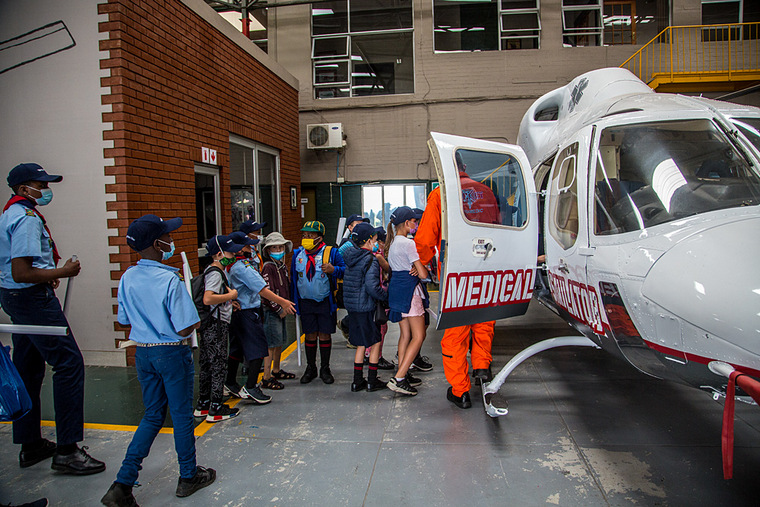
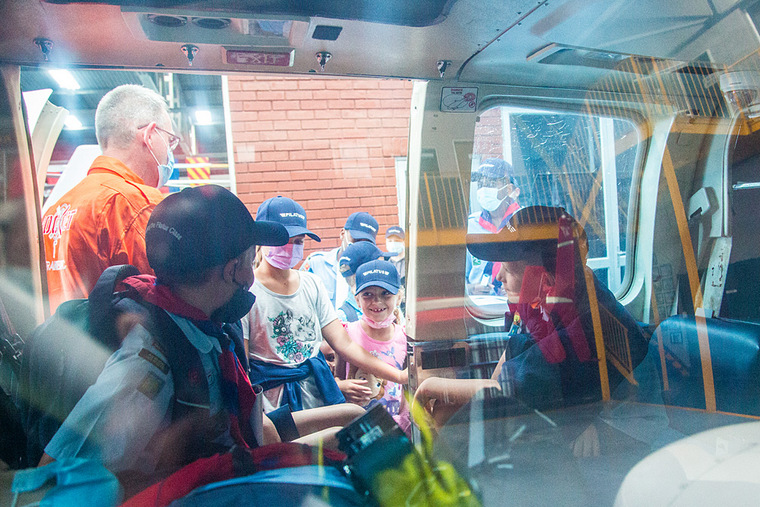
The Cubs were shown the Aero Medic training airframe by Rory ...
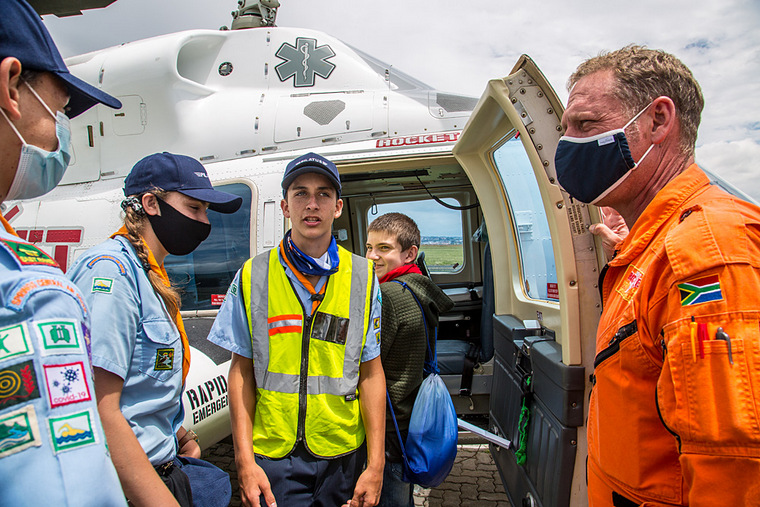
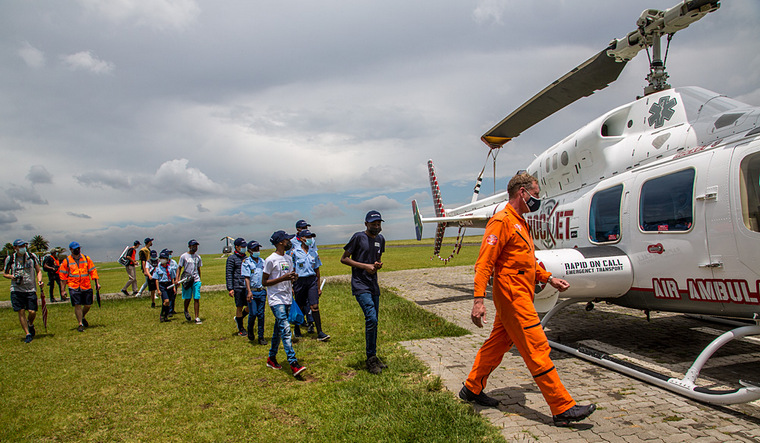
… while Deon took groups of scouts out to the Bell 222 on standby on the helipad.
As the group were leaving the Henley Air hangar for the scheduled lunch break, one of the Cubs came to call the medical staff, as the Akela, Lorna Jones, who looks after the Cubs, had sadly fallen and hurt herself. By the time Deon got to her, the Scouts had already administered first aid and placed her arm in a splint. Deon said they had done a great job and she was taken to hospital for further care. Thankfully, she has recovered well, due to prompt first aid treatment. Skills in action in a practical setting!
Google Banner Ad
Google Banner Ad
After the scheduled lunch break, the group went through the Rand Terminal building onto the apron, on their way the Academy Air. Once again, the senior Scouts and Officials ensured the Cubs and Scouts moved in designated areas, dodging the huge puddles of water while groups of 10 at a time were organised to cross the taxiway to Academy Air in a safe and controlled manner.

The "Officials" move across the taxiway to the Academy Air hangar, after the Cubs and Scouts had crossed the taxiway.
Arnie Meneghelli, the Number 2 pilot for the Flying Lions Aerobatic Team, was on hand to show the Cubs and Scouts the Flying Lions Harvards and Warren climbed up on Harvard #1 wing to help the Cubs and Scouts have a look into the Harvard cockpit, two at a time.
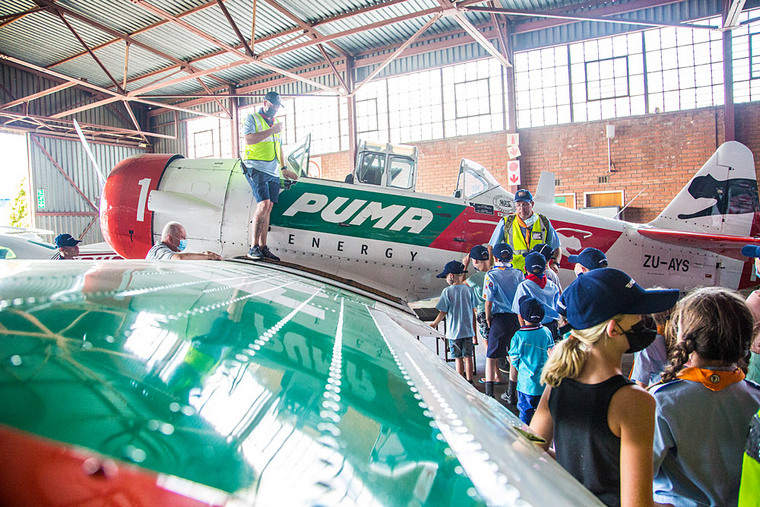
Arnie standing by, while Warren and Gareth get ready to assist the youngsters getting onto the Harvard's wing and off again safely.
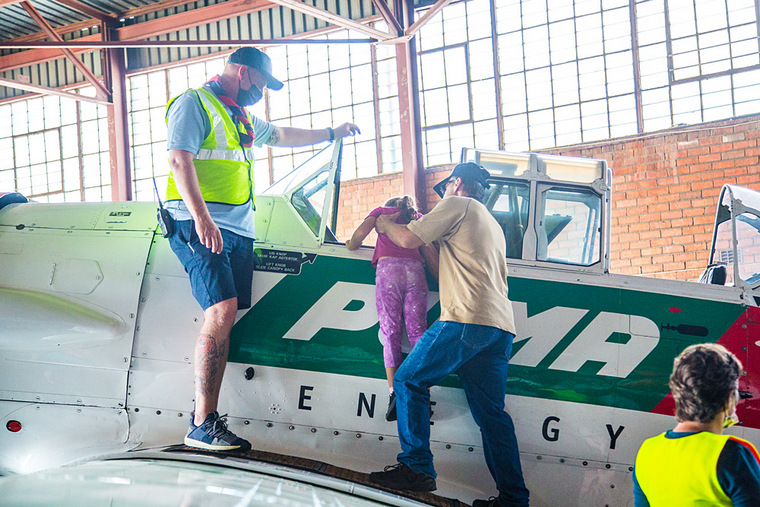
Some of the shorter children are assisted to get a better view of the Harvard "driving seat".
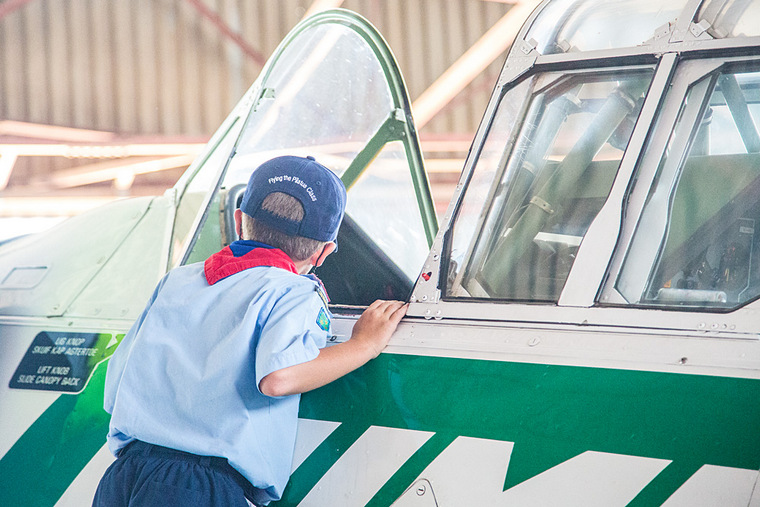
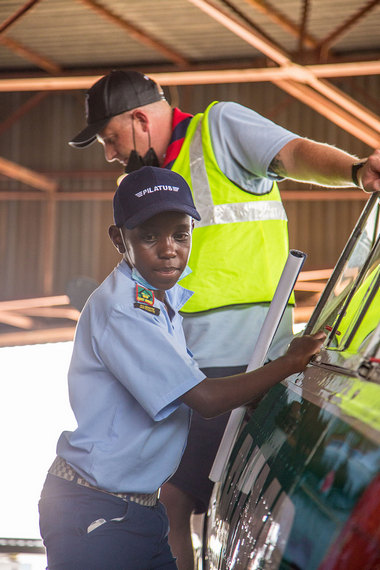 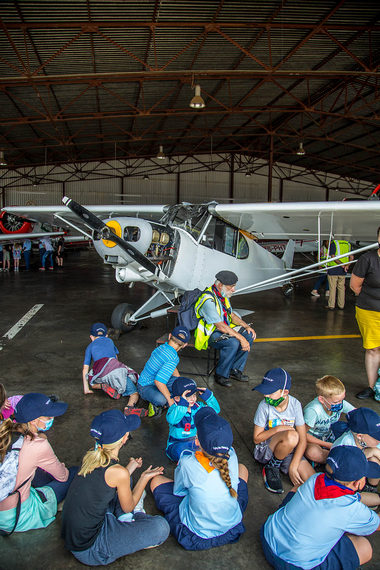
While others were dreaming of an aviation future those that had their turn to look into the Harvard "driving seat", or were waiting, had the opportunity to look at the amazing collection of different aircraft in the hangar……………while the some of the younger Cubs were rather exhausted, they waited in front of the Piper Cub under restoration, in the shade of the hangar entrance.
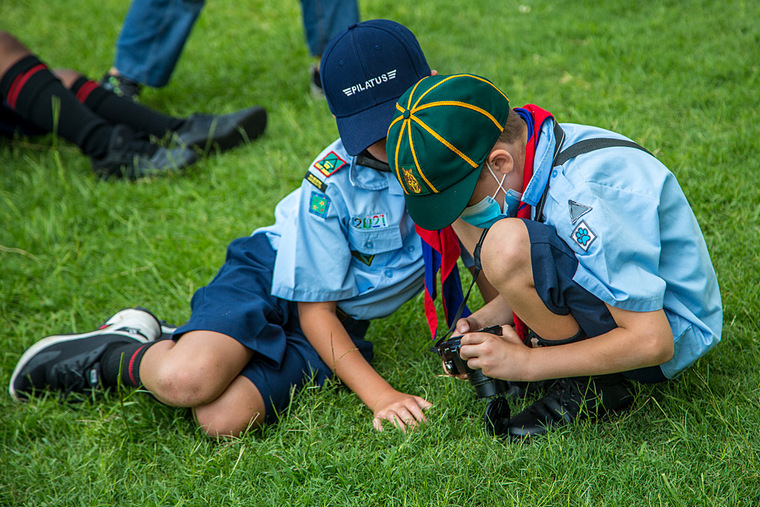
Young Thomas, 9 years old, reviews the photographs he has taken.
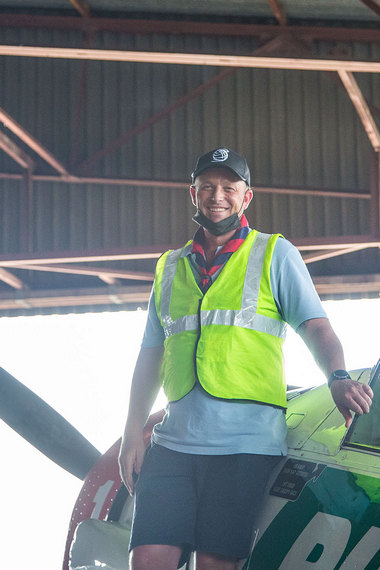 
Warren "just smiles" - satisfaction of making a difference in young people's lives and the formal group in front of Rand Airport Tower.
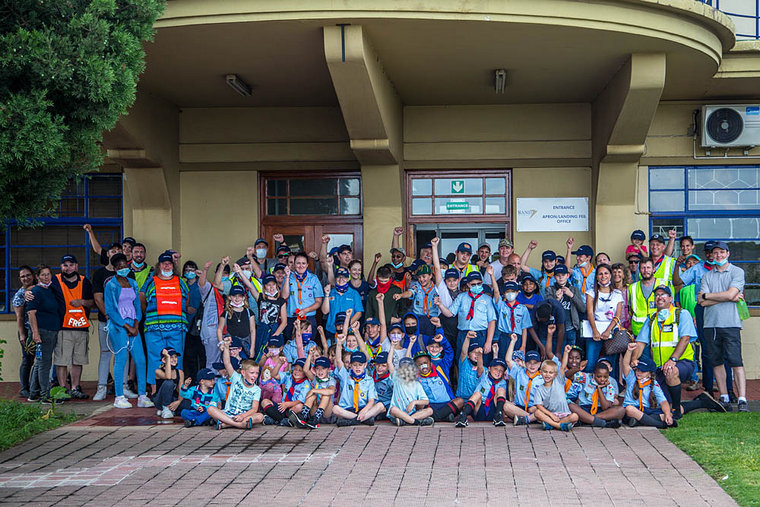
To close off an eye-opening day, the "Rand Airport Salute".
A visit to the SAA Museum had been planned as the final activity for the day, but everyone was tired, especially the younger Cubs and it had started getting rather warm. It was decided that this would be reserved as an activity on its own at a later date.
This day had, no doubt, achieved its objective of showing the Air Cubs, Scouts and Rovers that there are many different aspects of aviation that can be followed. The disciplines and life-skills developed in being Cubs and Air Scouts will certainly give these young people a great foundation to launch their lives from!
The dedication and hard work of Warren Lovell, Gareth Langton and the many other volunteers and parents involved in moulding these youngsters takes up a lot of time, but is worthwhile especially when one sees the enthusiasm, and indeed, the level of knowledge already exhibited of the Cubs and Scouts. The Scouting movement provides the structure within which they operate while the ability to take a group of 85 young people through these facilities with confidence, shows that this enables learning and personal development in a fun setting.
Google Block Ad
They are planning a bigger group event, involving other Gauteng Air Scout groups to camp over two nights around an upcoming Steady Climb event.
As we were assembling for the final roll-call, we saw Deon from Rocket HEMS, who told us that they were about to leave for a call to Kuruman! The final roll-call was held and everyone left to contemplate what they had learnt about broader aviation aspects.
Pilots Post was honoured to again report on this activity of 4th Benoni Air Scouts with Springs Central Air Scouts and thanks are extended to Warren Lovell and all those who made this possible, for their hospitality and excellent arrangements and the aviation businesses at Rand Airport for their willingness to provide exposure to aviation disciplines for future generations.
Google Banner Ad

|
                                 |























